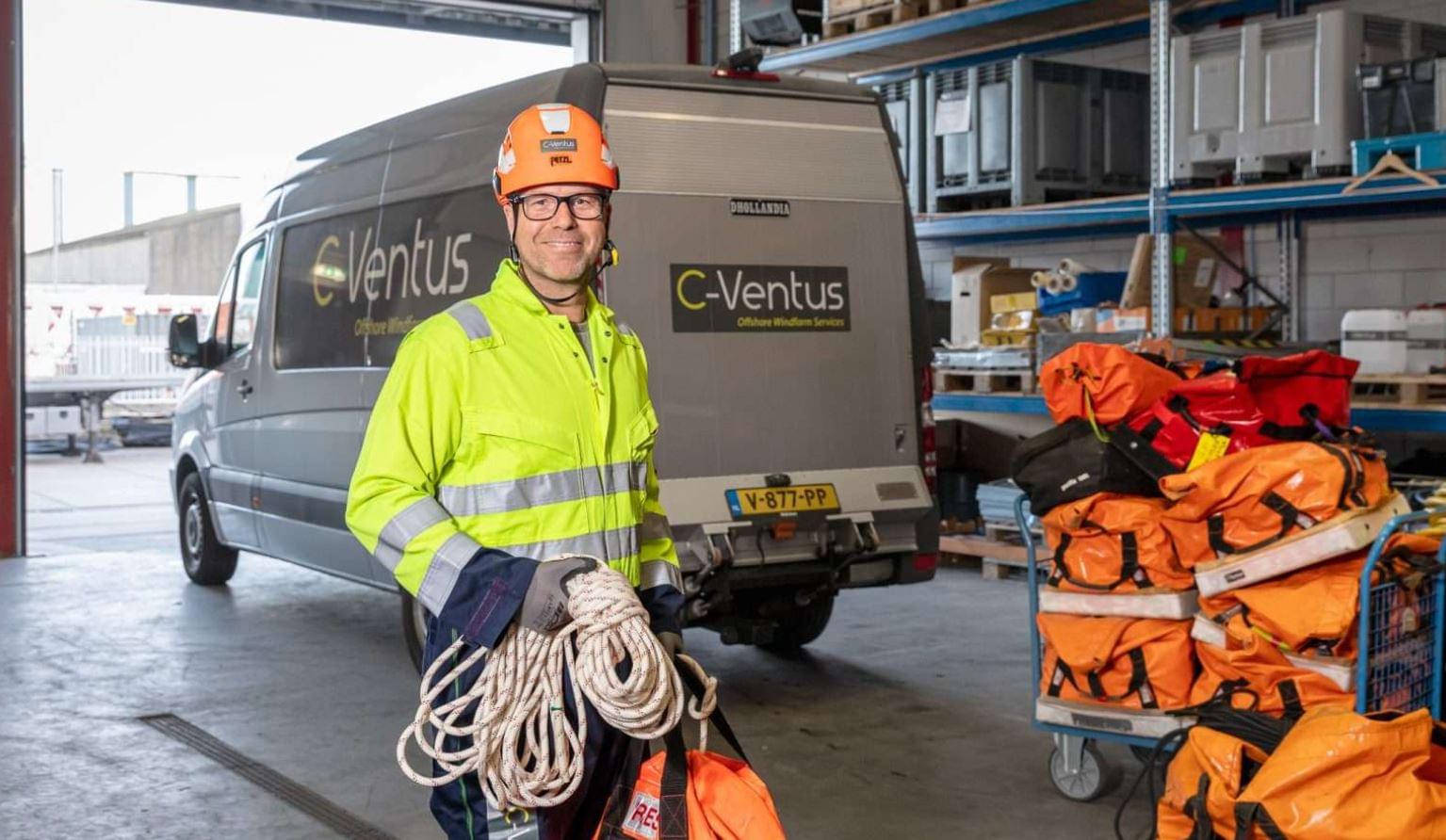
“AS A CLIMBER I HAD EXPERIENCED QUITE SOME THINGS BUT A WIND TURBINE WAS SOMETHING ELSE ALTOGETHER”
Published on: 23/12/2022
Article: AYOP
“AS A CLIMBER I HAD EXPERIENCED QUITE SOME THINGS BUT A WIND TURBINE WAS SOMETHING ELSE ALTOGETHER”
Joep, you are a rope access manager. Are you ‘in the ropes’ all day?
“I mainly lead a team who perform the activities using various rope techniques. These take place in hard-to-reach places where using scaffolding isn’t an option. For C-Ventus it mainly involves wind farms at sea.”
So how does one carry out activities on wind turbines while hanging from ropes?
“A team of rope access technicians is taken out to the wind turbines in the morning by a small crew transfer vessel to perform maintenance activities. Upon arrival at the turbine they latch onto a self-retracting lifeline and hop off the boat and onto a ladder connected to the wind turbine mast. Fully secured, they climb up to the platform and get to work – always in teams of at least two per turbine.”
What sort of activities does it entail?
“We mostly work on the bottom, yellow-coloured part of the turbine: the ‘transition piece’ (TP) – this is situated directly in the water and faces the most extreme conditions. The activities range from cleaning, performing inspections, reapplying the coating, assembly and disassembly or other damage repairs. It is very diverse.”
Do you perform maintenance activities yourself occasionally?
“I have to get out there now and then to keep my IRATA certification, which is an internationally recognised quality label for industrial climbers. Nevertheless, as a manager I spend around 80% of my time in the office, mostly working on preparations. I ensure the plans are ready and the necessary materials packed. We start every new project with a kick-off meeting, then supervise the project, and finally draw up all the required reports for inspection. That said, being out at sea is one of the best parts of my job so I do try to join in on occasions!”
How did you end up in the rope access sector?
“I started training to be a PE teacher when I was 18. Although I didn’t really enjoy teaching this time did bring me something else. In the third year we were taking classes in outdoor sports and I really clicked with the instructors. They turned out to have a company that oversaw team outings in the Belgian Ardennes featuring activities like climbing and kayaking. That’s how I ended up in the climbing world, and later in the sector. I worked as a rope access technician at the Shell refineries in Pernis and Moerdijk until I was offered the role of rope access manager by C-Ventus some four years ago now.”
What appealed to you about that job?
“Working in a clean, fresh environment – I really love that, especially in view of the future. I believe this is an industry with enormous potential. I can also combine my work well with my family, and I clicked with everyone here. I’m really glad I made the transition.”
But you’d never seen a wind turbine from up close before?
“No. As a climber I had experienced quite some things but a wind turbine was something else altogether. Especially when you are dropped on the turbine and the crew transfer vessel moves on. There’s absolute quiet; no cars, no motorways, just the sound of the sea. I love it.”
What skills do you need to work with wind turbines outside?
“We used to look for climbers whom we could teach to weld or paint. Now it’s often the other way around: we teach welders how to climb. It’s easier. Anyone can take the IRATA climbing course: it’s four days of training and one day of exams. You also need a GWO (basic safety) training, but all in all, it’s not too much.”
And what are your skills as a manager?
“You have to be able to handle stress. And it’s also helpful to have good communication skills, including in English, and be able to keep an overview of the project and planning. It’s a job in which you continue to learn, and that’s what makes it challenging.
Article: AYOP